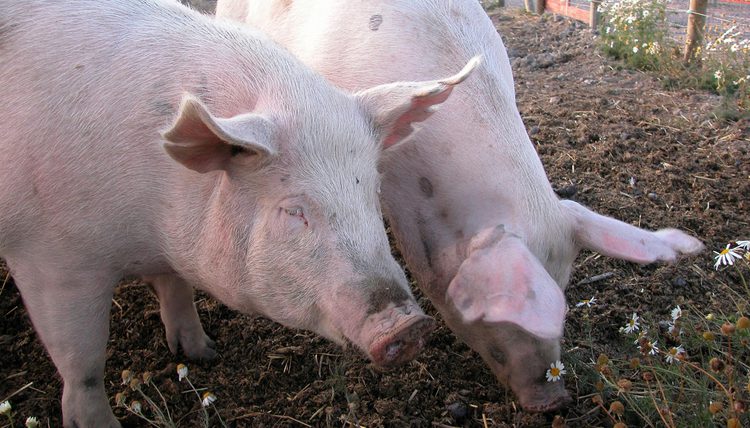

The most common parasites in Swine are worms (roundworm and whipworm), mange mites, and lice that cause discomfort and production losses in pigs.
Worms in pigs
Adult roundworms live in the pig’s small intestine but immature phases travel through the liver and lungs. All life cycle stages cause reduced pig growth rate, due to competition for nutrients between the worms and the pig, and may cause coughing and Diarrhoea.
Whipworms are smaller and live in the large intestine of the pig. Affected pigs usually go off-feed, and may become dehydrated due to Diarrhoea. The dung of affected pigs is likely to contain mucous and blood. Severely affected pigs may be Anaemic. Pigs become infected with both types of worms by eating eggs containing larvae. The eggs of both worm types are very thick-shelled and disinfectants do not destroy them. Eggs are usually surrounded by sticky material making them easily spread around the farm on dirty boots. Roundworm eggs remain infective for as long as 10 years, making control difficult; particularly if pigs are raised outdoors.
A diagnosis of worms can be conducted relatively cheaply by a laboratory by examining dung samples for worm eggs – as is conducted for sheep, cattle and goats. Adult worms may also be detected in the intestine during processing “Milk spots” present in the liver are an indication that your pigs have roundworms.
Successful control of worms in pig herds involves a combination of strategic drug therapy and environmental cleanup. There are a number of drugs on the market registered to treat worms in pigs either by injection or oral drench or in-feed. Talk with your veterinarian about the best product to use and the best time/route of administration.
Mange and lice
Mange mites and lice can infest pigs causing scratching, reduced growth and poorer feed conversion efficiency. They can also cause damage to internal structures in the piggery as pigs rub on fittings to relieve itchiness. Sarcoptic mange lives in the pigs’ ears, whilst Demodectic mange can be transmitted from foxes to pigs and live on the skin. Mange mites can cause pigs to shake their heads, sometimes resulting in “blood blisters” in pigs’ ears. Pigs that have been affected for a long time may have crusty skin spots particularly around the head region.These parasites are usually transmitted in the farrowing shed from the sow to her piglets, but carrier pigs can introduce them into non-infested herds.
A diagnosis of mange mites can be made by taking a sample of ear wax and looking for mites under a microscope. Most veterinary laboratories can perform this test. Pigs with allergic reactions to mange mites will have spots on their skin that can be detected during processing—and may result in a penalty to the producer if the carcass has to be skun or down-graded.Lice are easily detected by the naked eye—mainly around the face and neck
Mange and lice cannot live for long off of the pigs, so can both be eradicated from a farm relatively easily. Seek advice from a specialist pig veterinarian on this. Extra biosecurity precautions are required to stop foxes and other wild animal species spreading Demodectic mange to outdoor-reared pigs. If you choose to live with infestation on your farm, there are a number of injectable and topical treatments available. Treatments are best given to the sow before farrowing, to prevent spread to piglets—and again when piglets are weaned into a clean nursery.
 Contact Jaguza Support
Contact Jaguza Support